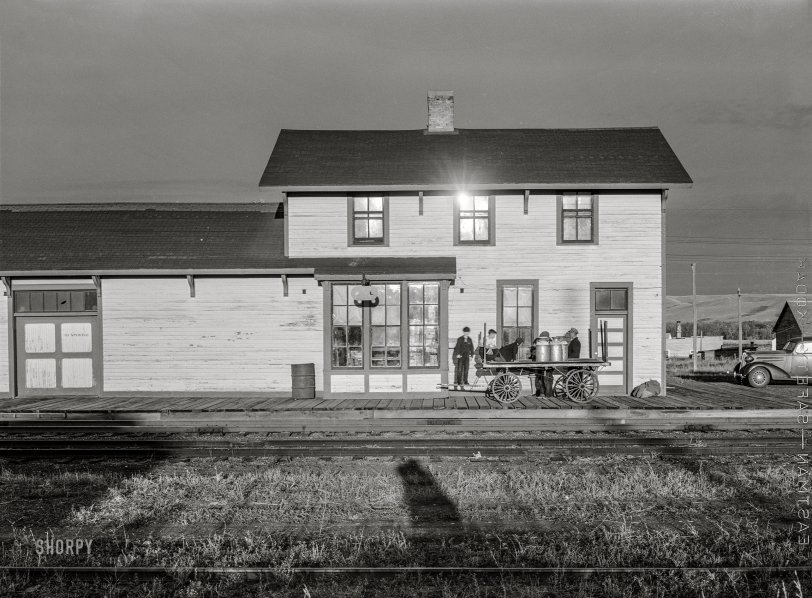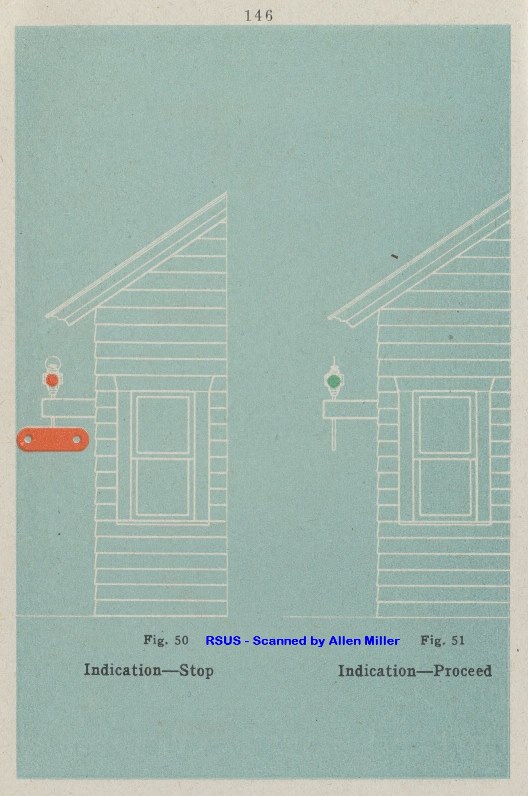


Framed or unframed, desk size to sofa size, printed by us in Arizona and Alabama since 2007. Explore now.
Shorpy is funded by you. Patreon contributors get an ad-free experience.
Learn more.

- Lofty addition
- In 1912
- Keenan Building
- Six years old
- Taken from the P.J. McArdle Roadway?
- It stood only 47 years
- Three track mind
- Incline to the right
- Reach for the sky, 1912 style
- No clean sweep
- Same Job Title, Same Face
- Sadly Lost
- Beautiful ...
- Where you get your kicks
- Aim High
- Pueblo Revival sisters
- Pueblo Neoclassicism
- Milk Man
- Regional dialect.
- Spielberg's inspiration
- Great Photo
- Loaf Story
- Do you still have the Rakes category?
- Could almost be a scene from the 1957 movie 'Hell Drivers'
- The Wages of Fear.
- Conspicuous by their absence
- Got Milk?
- All that aluminum
- No lefties
- Smoke 'em if you've got 'em
Print Emporium
Milk Runners: 1940

October 1940. "Rail depot in Burlington, North Dakota." Medium format acetate negative by John Vachon for the Farm Security Administration. View full size.
The "Iron Mask" is a train order signal
Here is a page from an old Northern Pacific RR signal book

Re: Iron mask
It's a switch indicator, but I see no switch in the photo, nor do I see any mechanism below the indicator connecting it to a switch. I wonder if the indicator has been repurposed to something else -- a flag stop indicator, perhaps?
Train Order - Iron Mask
In response to ColoZ, the plate with two holes is a signal to tell approaching trains that an important operational message for the train is present at this station. I think that, in the position as pictured, there is no message (train order), since the train crew would not see the plate. It is mounted on a vertical shaft, usually with a lantern mounted above for a night indication (probably green for the train in the pictured orientation). When it is rotated about 90 degrees, the train crew would see the plate (probably red, maybe yellow) with a similarly colored light at night (if so equipped), and know that there were 'orders' for the train. I do not see the lantern in the picture, though.
Train Order Signal
The plate with two holes is called a Train Order Signal. When turned to the appropriate position the train's engineer is notified that he must stop at the station.
Iron mask
Anyone know the purpose of the plate with two holes hanging in front of the window? Some part of a signaling device?
The Burlington Project: making farmers out of miners
Captions on most of Vachon's October 1940 photos in the Burlington, North Dakota area refer to the "Burlington Project," for which the FSA had assumed responsibility. It was well-meaning, but generally unsuccessful. As historian Steven Martens explained, '"the Burlington project was set up to ameliorate the desperate condition of some 35 or 40 families displaced from the small Burlington vicinity coal mines. A plan was implemented to utilize DesLacs River reserve water for irrigation of bottomlands, and to establish on those lands individual subsistence farms with sufficient irrigation acreage." Each family was provided with a cottage, irrigated tract, barn, and chicken house. According to Martens, "based on the many obstacles and the scale of the project, in retrospective this 'utopian' project was probably doomed from the beginning." Eventually, ownership of the homes was transferred to disabled veterans. For more, see https://www.history.nd.gov/hp/PDFinfo/64501091FedReliefConstruction.pdf
























On Shorpy:
Today’s Top 5